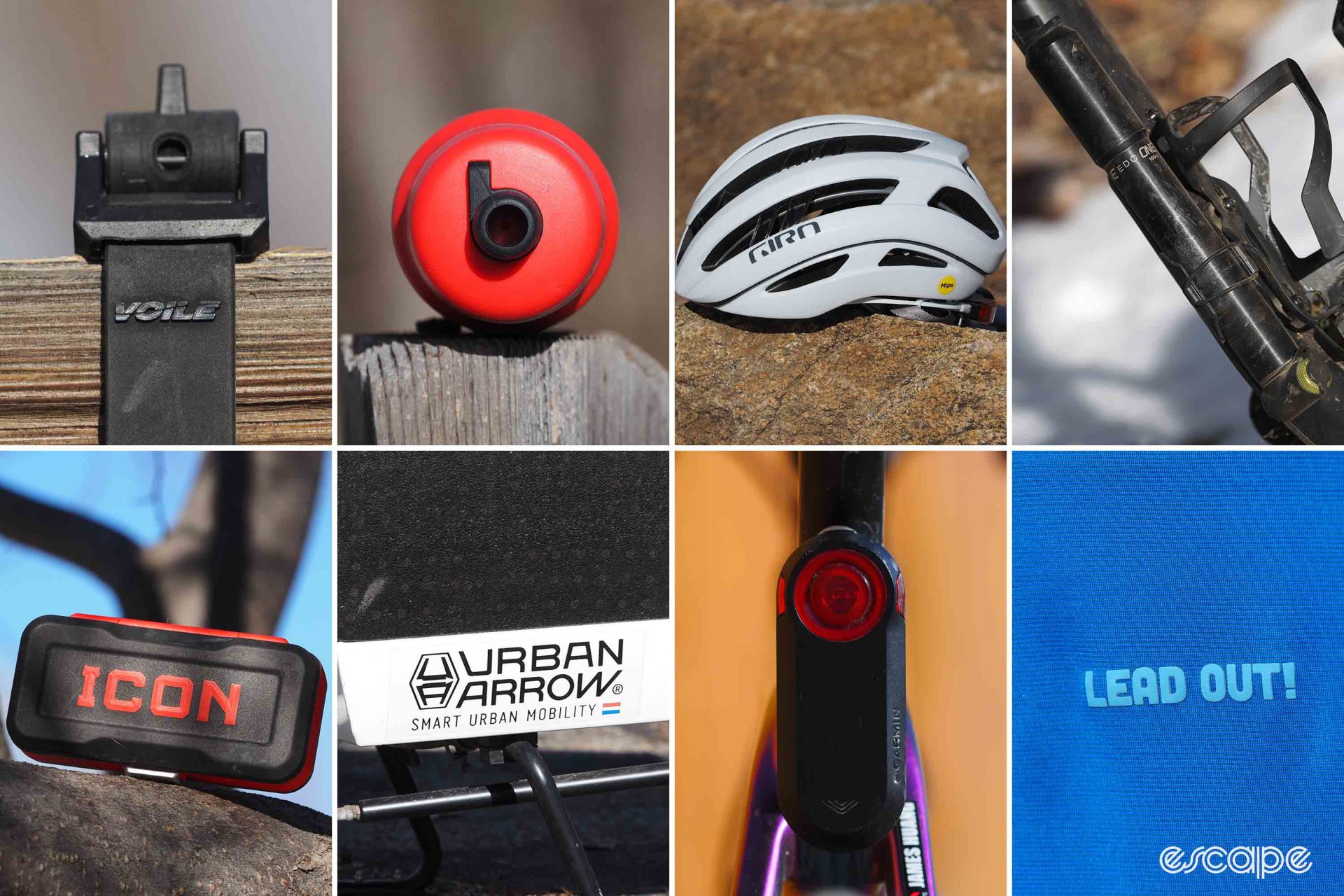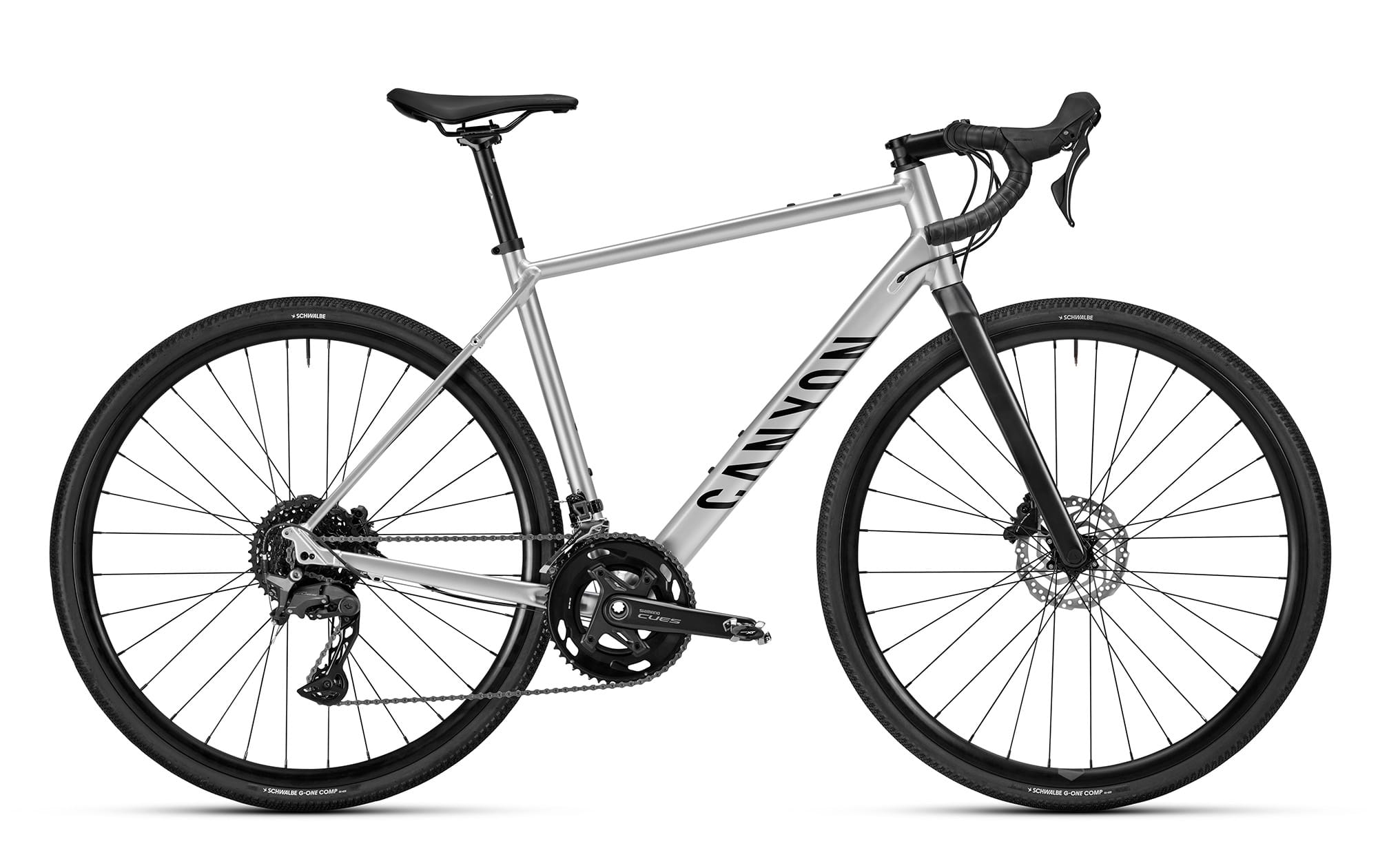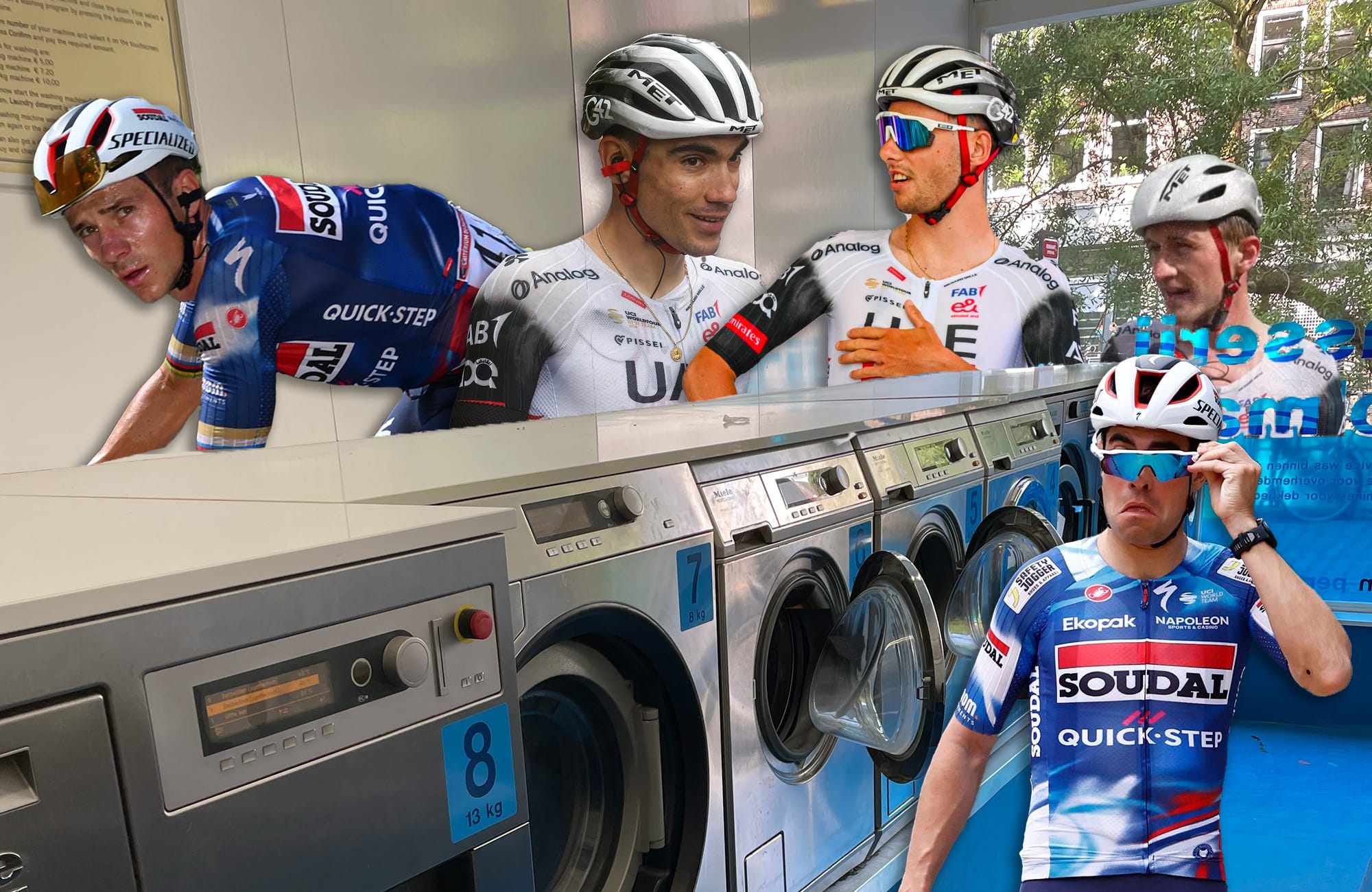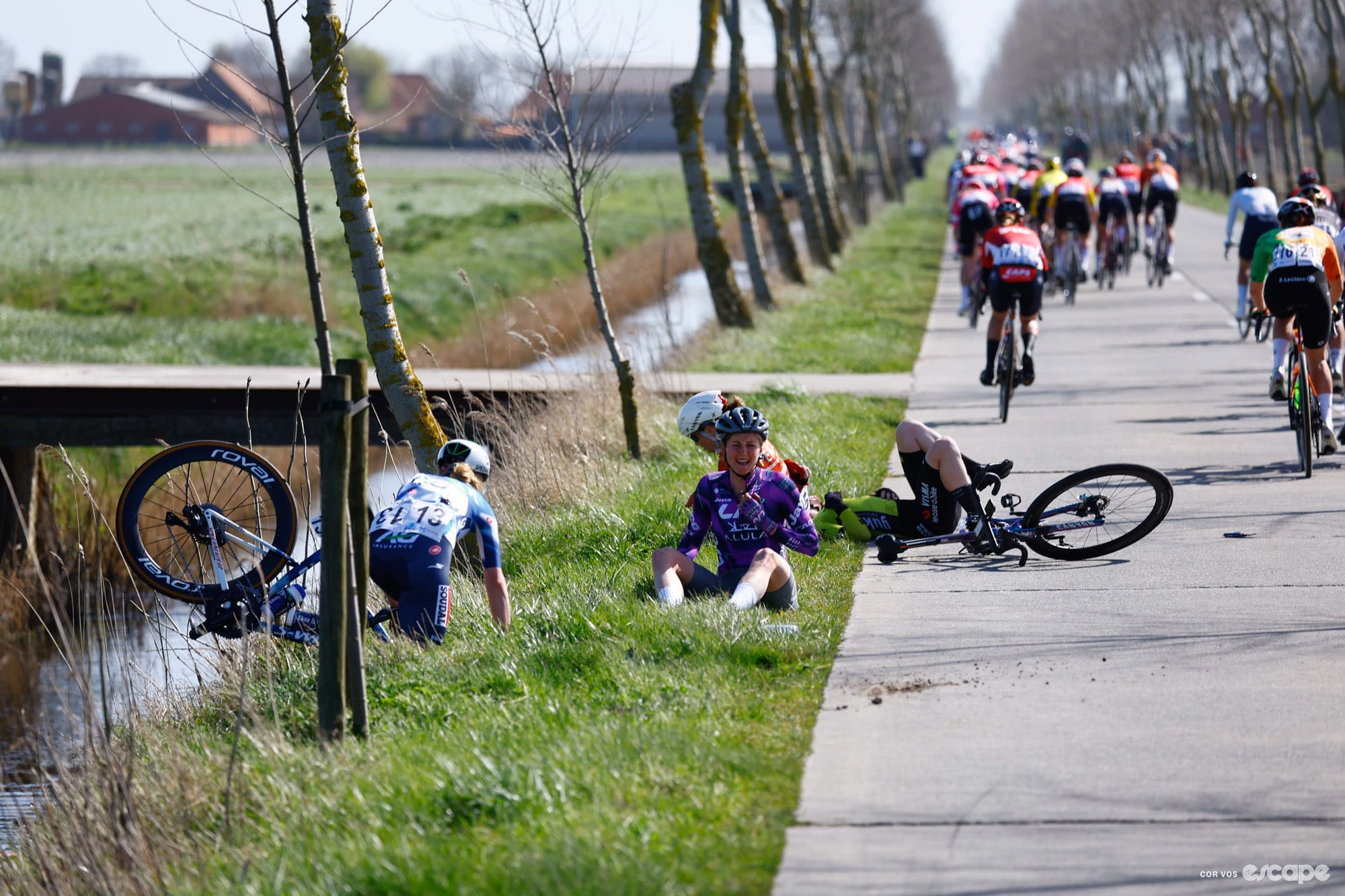Bikes are fun and should bring a smile to your face.
Riding them. Working on them. Looking at them. Thinking about them. Looking or thinking about other people riding or working on them. They’re the embodiment of joy, on two wheels.
In the grand scheme of things, very few people can rightfully complain that bikes are a source of stress for them, and despite the fact that bikes have been both work and play for me, I will always consider a day that includes a bike ride – of any sort – to be better than one without. Still, it's important for me to at least try and keep those two worlds separate, and my highest praise is usually reserved for the stuff that eliminates any potential for headache, but maximizes the enjoyment.
Over the last 30-plus years I’ve been riding bikes with any semblance of fanaticism, the act of pedaling has been a critical “off switch” for my overactive brain. Whereas some people might ride to gather their thoughts, I ride to think about nothing at all.
Similarly, I’ve come to realize that my favorite pieces of gear are the ones that demand the least amount of mental energy. Sure, the bright and fancy stuff is always fun, but ultimately what I find myself choosing time and again for myself are the items that add to my sense of joy without also adding any anxiety. They perform exceedingly well (such that I’m never bothered by what they’re not doing well, either), they’re there when I need them and sit quietly in the background otherwise, and require little-to-no care on my part. They’re faithful servants that ask for almost nothing in return, but yet contribute so much to my riding life – perhaps somewhat ironically by virtue of the extraneous mental clutter they remove.
We’ve all got enough things to worry about in our lives as it is, and I sure never want to add bikes to that list. More smiles, please.
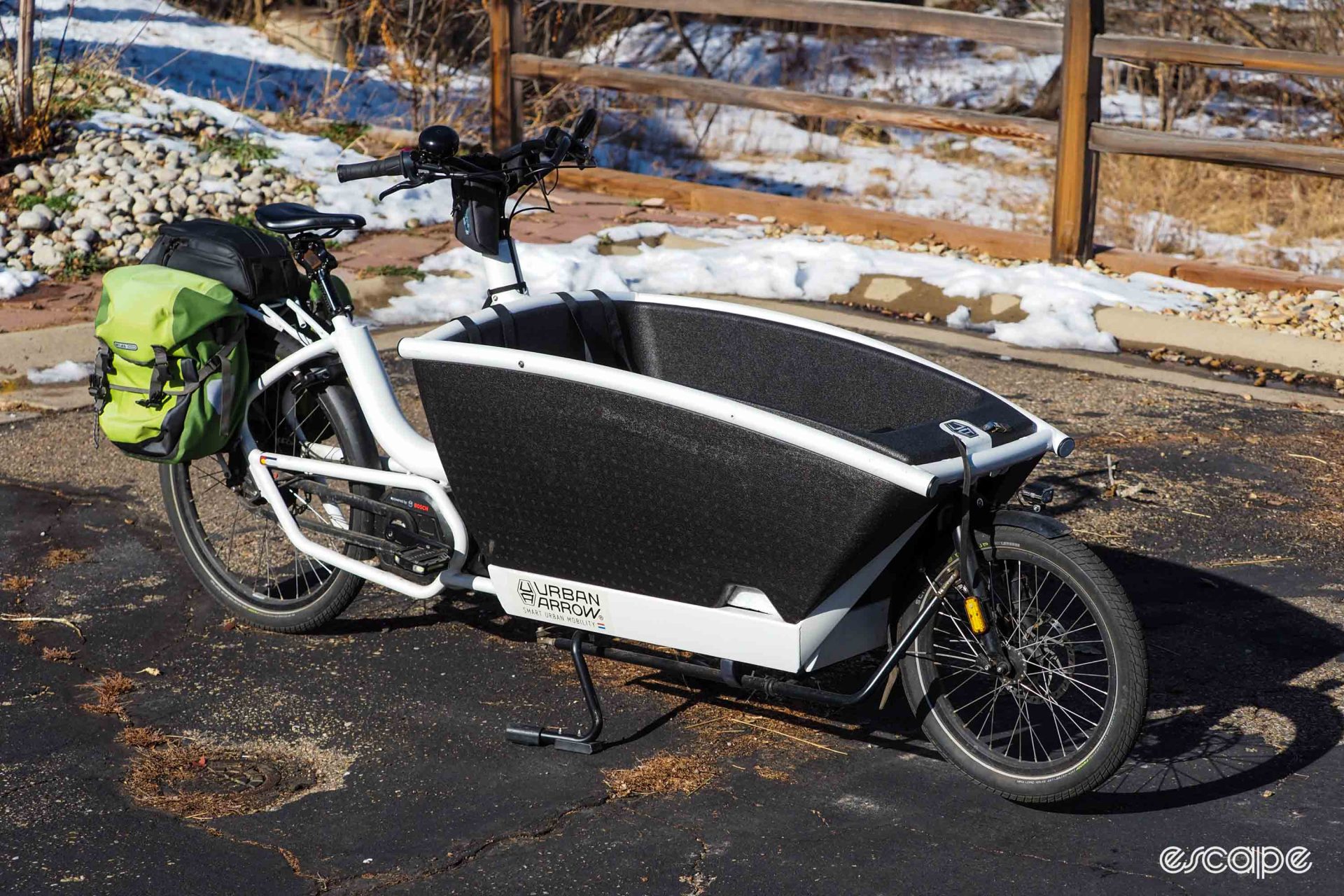
Urban Arrow Family cargo bike
I know, I know, I’m starting to sound like a broken record with this one, but more than four years after first landing in my garage, the Urban Arrow Family is still – without a single doubt – the best bike I’ve ever purchased.
My affection for this beast of burden boils down to how profoundly it has changed my day-to-day life. I was already no stranger to cargo bikes (I previously owned a fancy custom Yuba Spicy Curry), but the Urban Arrow’s front-loader format was a revelation. My kid loved how easily she could get in and out – and how safe she felt inside the big foam box – and the optional rain cover has proved a godsend on school runs in winter cold. And as capable as the “bucket bike” is for passengers (both kids and adults), I’m constantly amazed at how much stuff I can haul when running errands. Two full-sized bike boxes on top and 40 kg of stuff in the box? No problem. It feels like cheating every time.
It’s also plain fun to ride. The ridiculously long wheelbase and laid-back riding position encourages a similarly laid-back attitude when cruising around town, and when the road heads uphill (or if I’m running late), I can just kick the Bosch mid-drive motor into Turbo mode for an instant blast of speed.
It’s obviously not the lightest or fastest bike in my fleet, it’s unfortunately only at its best if you’ve got the local infrastructure to support it, and it’s hella expensive (but still way cheaper than an additional automobile). But that all said, my Urban Arrow is also unquestionably the first bike I’d grab if the house ever caught on fire.
Price: US$6,000 / AU$12,500 / £5,460 / €6,400 (starting)
www.urbanarrow.com
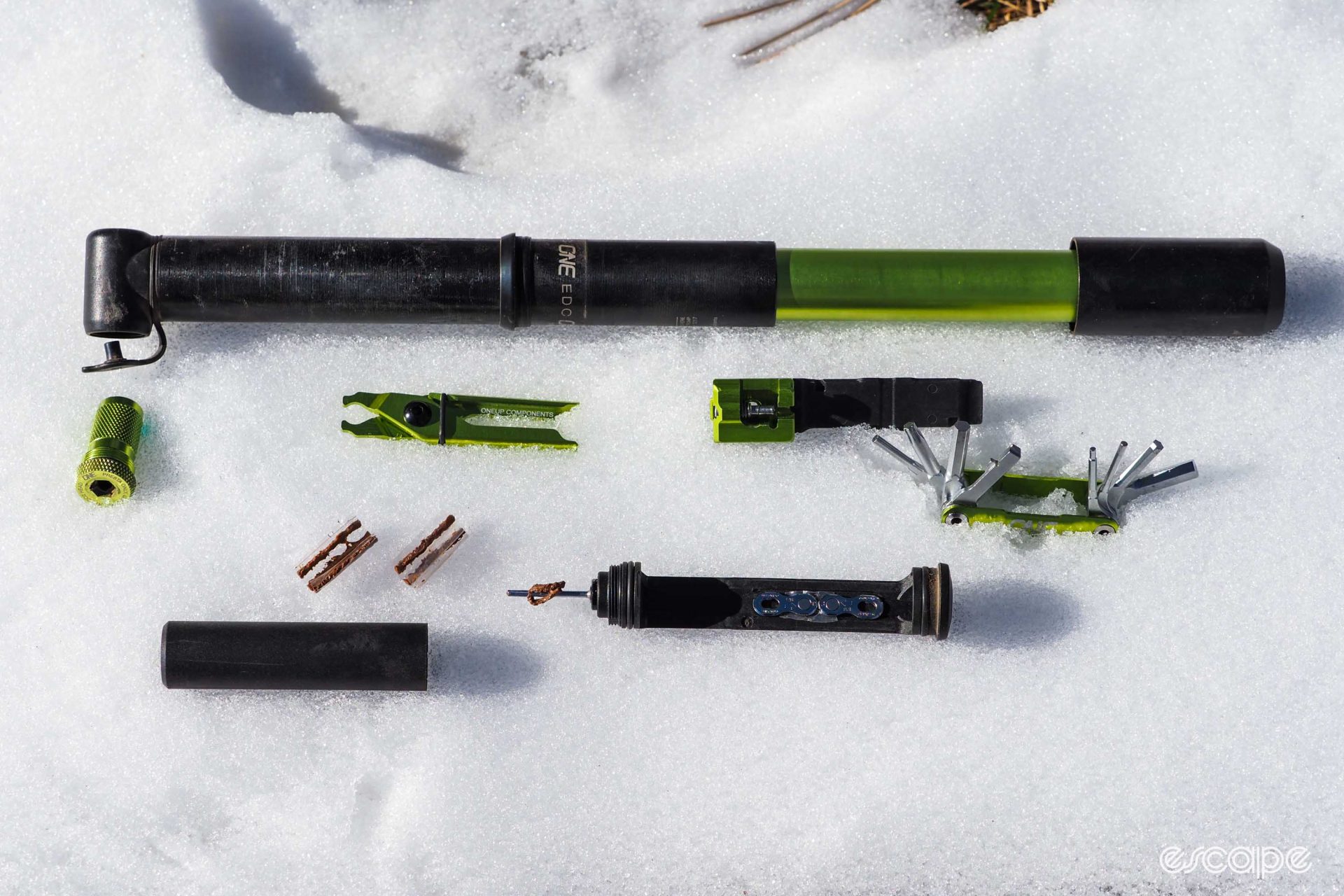
OneUp 100cc EDC pump
I’ve spent literally decades fiddling with how I carry spares on my mountain bike: saddle packs, bolt-on tools, tubes strapped anywhere and everywhere, stuff on the bike vs. in a pack, pumps vs. CO2 canisters. But regardless of where my flights of fancy might temporarily take me, in the last few years I always come back to my trusty OneUp 100cc EDC pump.
It’s not particularly light at 282 g fully loaded, nor is it remotely inexpensive, but it’s extraordinarily jam-packed considering the compact dimensions. There’s a nicely shaped mini-tool with a whole bunch of bits, a tubeless plug tool (with lots of extra plugs), master link pliers with a spot for a spare link, a proper chain tool, four (!) spoke wrenches, a valve core tool, and even a spare rotor bolt (or a spare chainring bolt for my older version). The pump itself is also a delight to use, with a high-volume barrel perfect for modern mountain bike tires, and the removable head serves double-duty as a CO2 inflator head. Heck, the thing is even sealed up so well that it’s needed virtually zero maintenance since I bought it however many years ago.
Got more than one mountain bike? Extra mounts are pretty inexpensive. Broke something? OneUp sells small service parts. As a particularly nice bonus, I also discovered earlier this year the tubeless plug fork can be replaced (with no modifications) with a Dynaplug one instead.
Other setups I’ve tried may be a little lighter, a little more compact, or a little prettier – and that Milkit Hassel'Off kit I tested earlier this year came awfully close to knocking the OneUp off the top step for me. But from a purely functional and convenience perspective, I still have yet to find anything better than this thing.
Price (fully loaded with all accessories): US$174 / AU$275 / £175 / €205
www.oneupcomponents.com
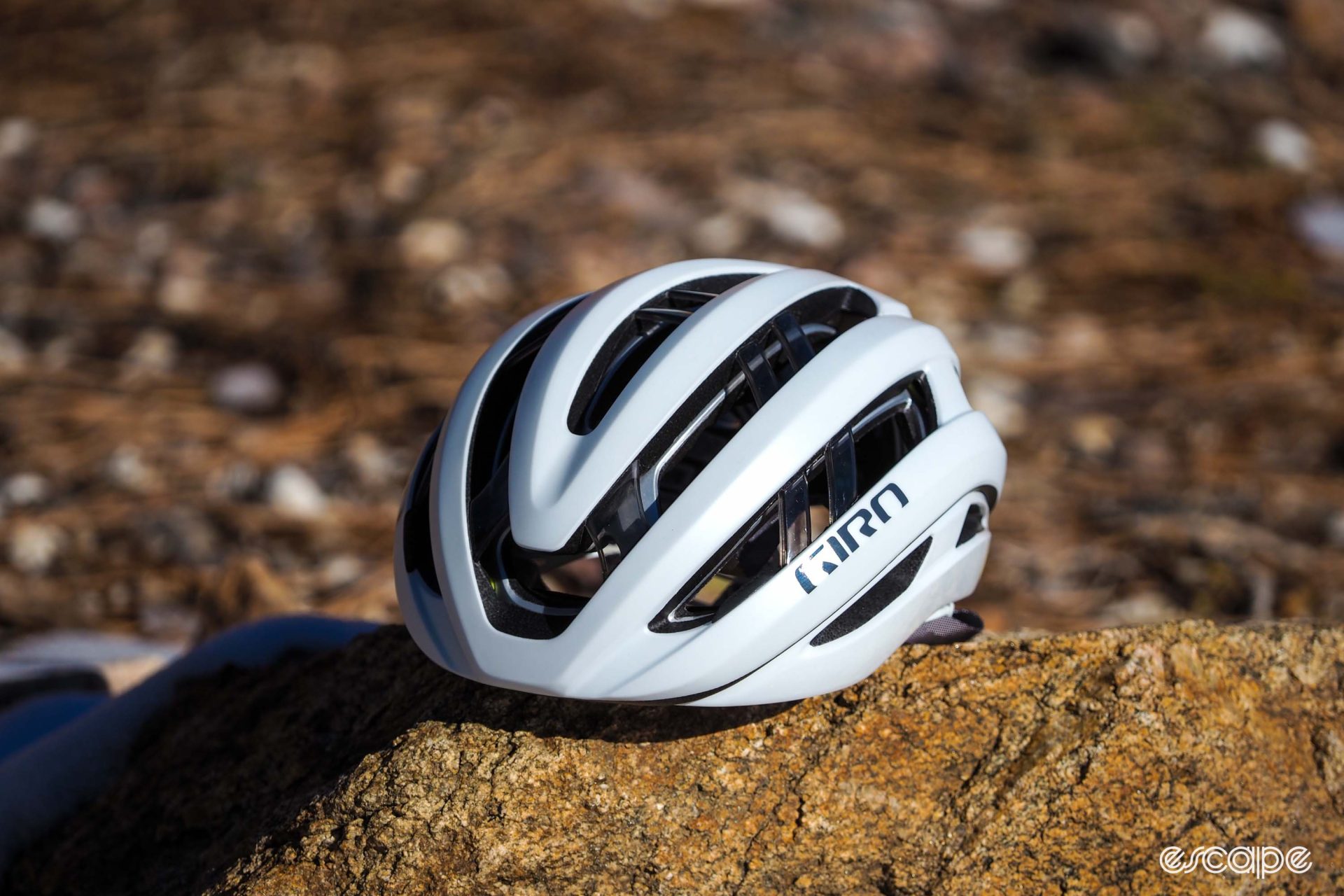
Giro Aries Spherical helmet
I’m been riding long enough that my first helmet had a Lycra cover on it, and it still amazes me how far these little foam buckets have progressed. Helmets are one of those things I’m particularly picky about, and the Giro Aries Spherical is the best road model I’ve ever used.
It’s comfortable to wear with a highly adjustable cradle, lots of padding, and a shape that works well with my oblong (and rather thick) skull. It’s exceptionally ventilated – at both high and low speeds – and is superb at managing sweat. It looks great. It’s decently light with great styling and a pleasantly low profile. Giro even insists it’s kinda aero, too.
More impressive to me, however, is how Giro has apparently bundled all of the above with superb safety.
Concussions seem like almost an inevitability if you ride long enough. I’ve suffered two myself (long ago, and thankfully relatively minor), but I know plenty of other people who have dealt with far worse (including my wife). Although not all the science behind brain protection is universally accepted or fully understood, I still like to stack the deck in my favor, and the Aries Spherical not only packs in all the latest-and-greatest safety tech, but it also earned the overall top spot at the Virginia Tech independent testing lab.
Before you @me, yes, I know the Aries is also one of the most expensive options out there, and there are other helmets that are nearly as protective at a small fraction of the price. But unless I’m specifically out reviewing something, nothing else I’ve found offers this level of protection while also nailing every other performance metric, so this is the helmet I reach for any time I’m heading out with drop bars.
Price: US$300 / AU$500 / £290 / €320
www.giro.com
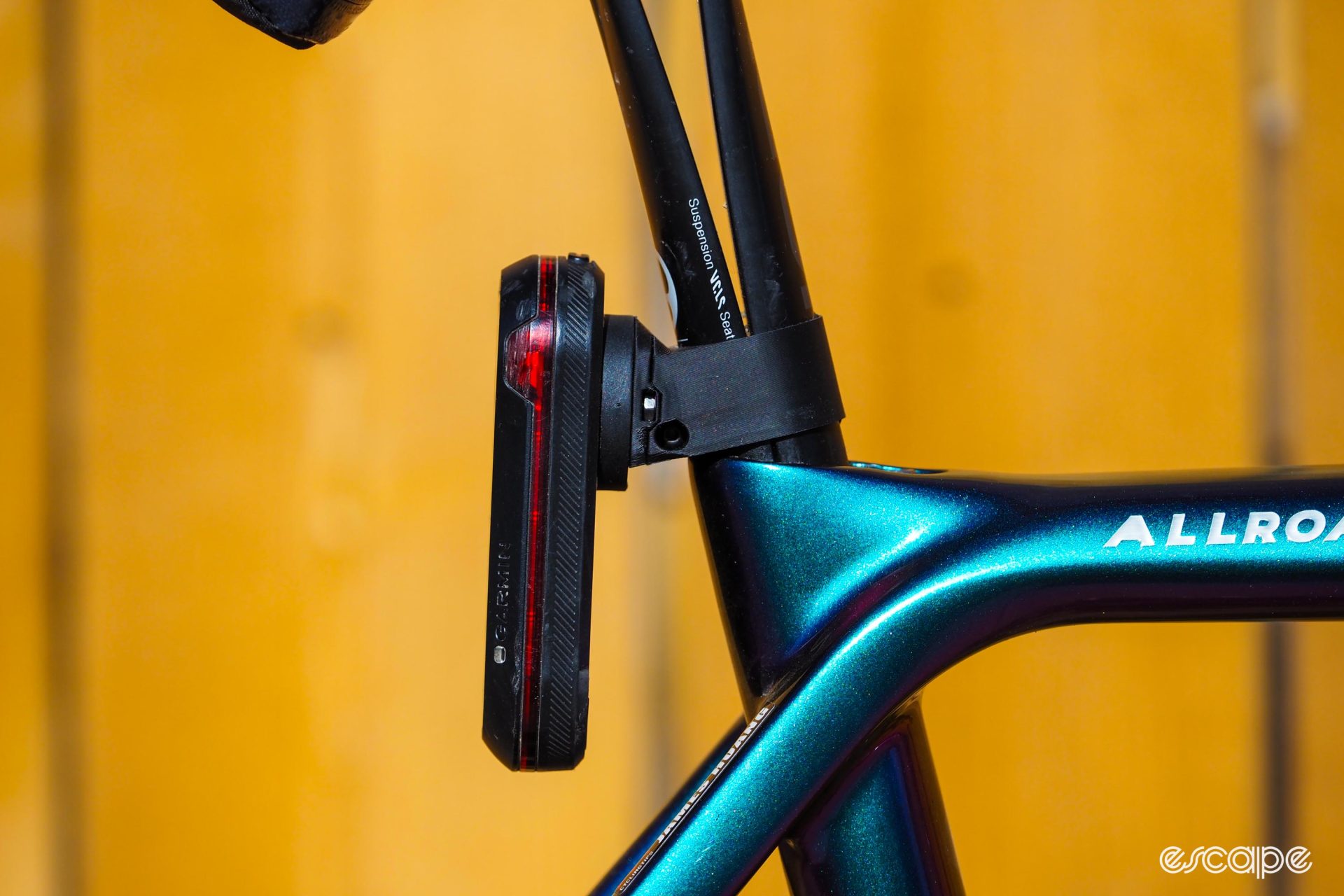
Garmin Varia RTL515
Remember what I mentioned up above about stacking the deck in my favor? I’m not sure what I can say about the Garmin Varia RTL515 that hasn’t already been said, but I consider this another essential piece of gear to help shift the odds in my favor.
This little radar-and-DRL combo unfortunately can’t smack the phone out of a driver’s hands, but the way it adjusts its flashing pattern when it detects an approaching car is maybe the next best thing given currently available technology. While I don’t have the data to prove this, I swear drivers give me a wider berth when I’m running this thing than before I started using it. The handy audio and visual alerts on a paired computer head offer a little extra peace of mind (mostly in terms of how it enhances your situational awareness), but in my opinion, that’s actually a secondary benefit.
I never head out on a road ride without my Varia these days, and I became such a convert that I bought one for my wife, too. A few other companies have attempted to copy what Garmin has done here, but as far as I can tell, no one has matched it yet.
Price: US$200 / AU$369 / £130 / €155
www.garmin.com
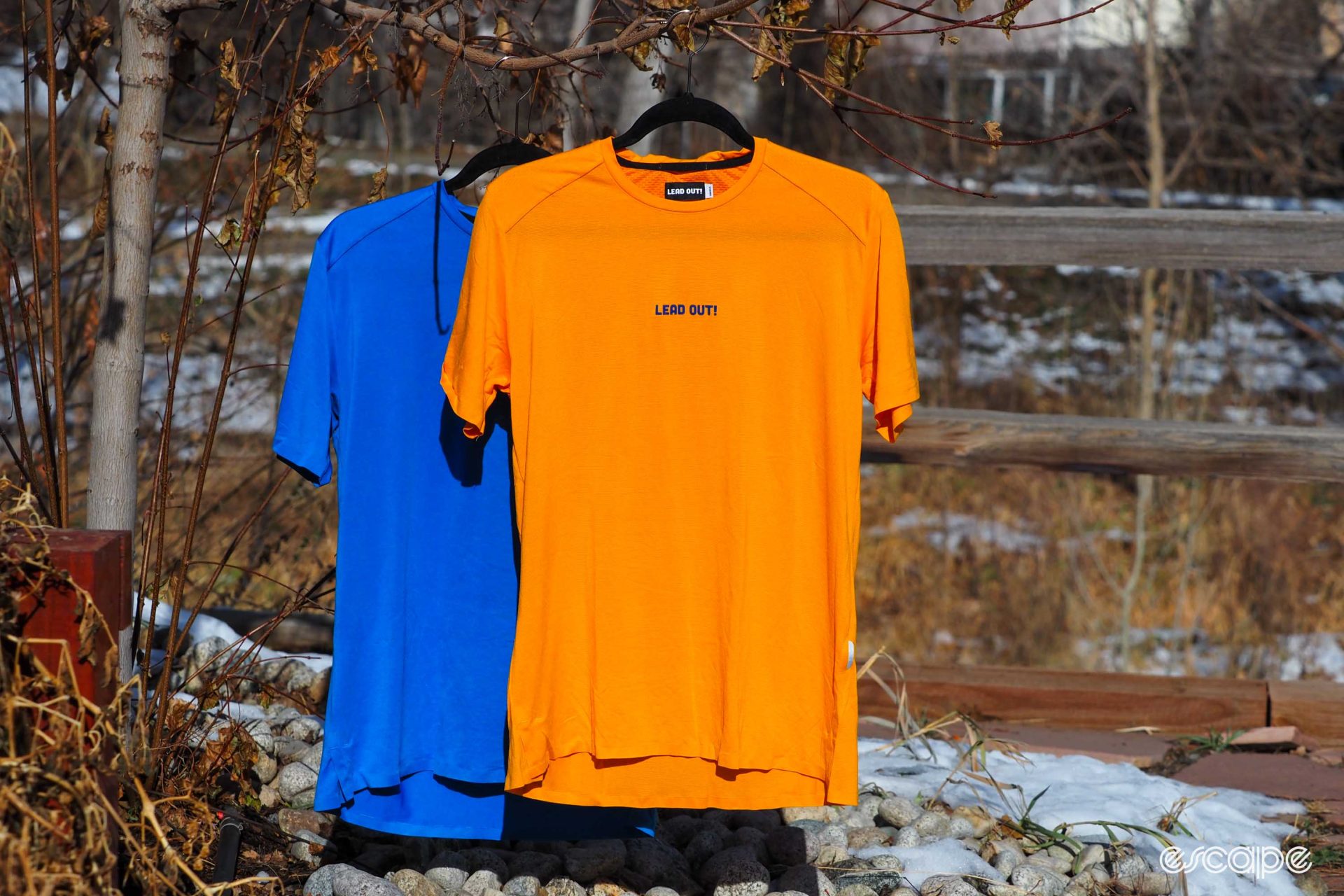
Lead Out Polartec Delta tech tee
I’ve been a huge fan of Polartec’s Alpha insulating fabrics for their incredible ability to keep you warm when it’s cold outside, and I’ve become an equally big fan of the company’s Delta material for the other end of the spectrum. I’ve worn all manners of fancy cycling jerseys meant for ultra-hot weather, but nothing else I’ve used compares to this stuff.
Polartec says the magic of Delta lies in its ability to hold just the right amount of moisture to enhance your body’s natural evaporative cooling – and hot damn, does it actually work (at least assuming the ambient humidity levels aren’t so high that evaporation isn’t happening much at all). No joke: the feeling is almost like you’re riding behind a set of misters, only you never actually feel wet.
There are several traditional zippered jerseys these days made from Delta, but for gravel and trail riding, I’ve been reaching for more casual tech tees. I find they’re not only more comfortable in those situations, but perhaps more importantly, they’re also way less expensive. My go-to this year has been from Lead Out (a brand better known for handlebar and frame bags). It comes in a good range of sizes and colors, the cut is a nice blend of sporty and casual, you can get it in both short-sleeve and long-sleeve variants, it’s more affordable than other options I’ve seen, and there’s minimal branding.
Price: US$50-55 / AU$TBC / £40-44 / €47-51
www.leadoutgear.com
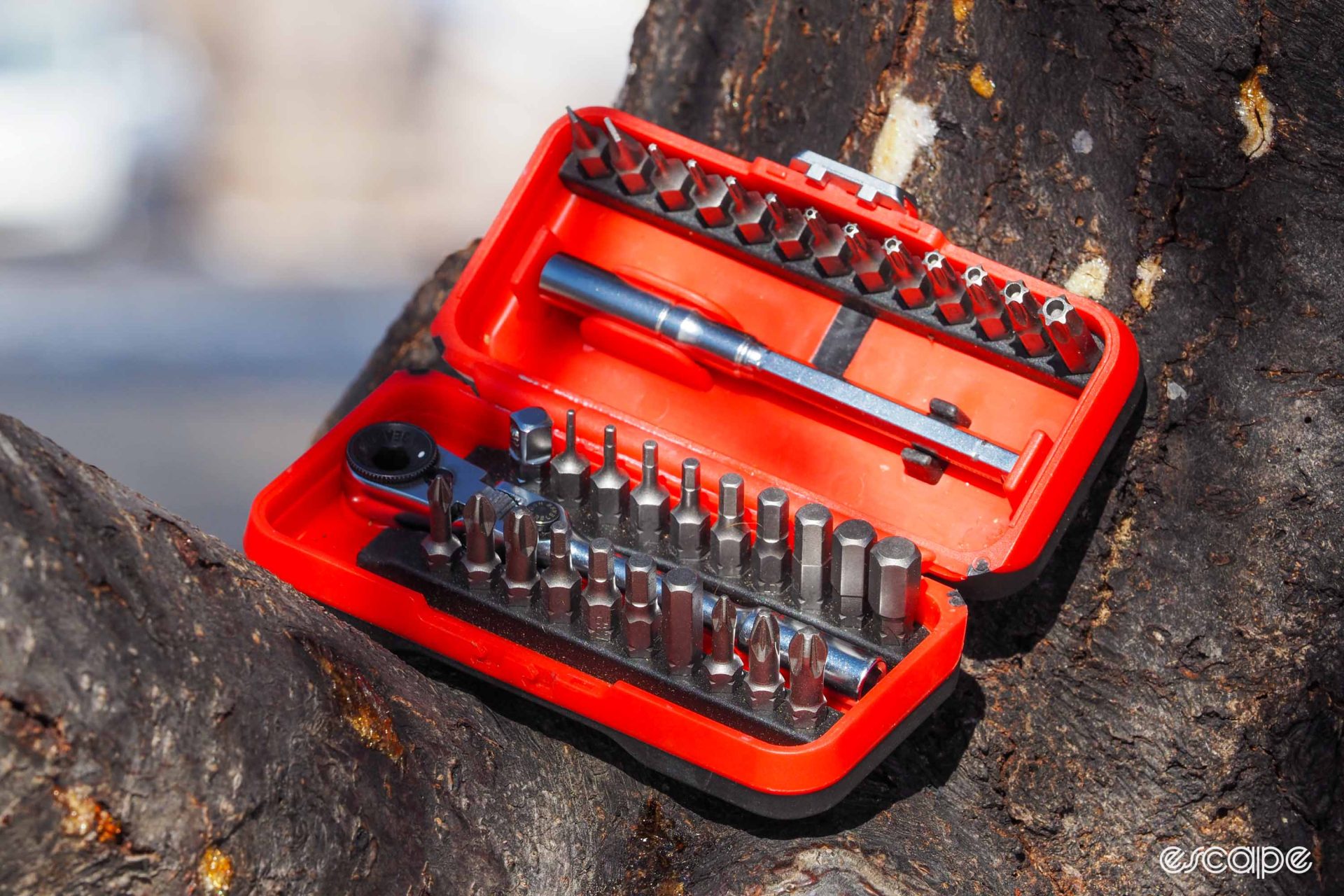
Harbor Freight Icon Ratchet and Bit Set
Yeah, #daveromemademedoit got to me, too.
This set was actually something Dave asked me to purchase for him a few years ago, as it was something he was curious about, but wasn’t available in Australia. After finding out how surprisingly affordable it was – and how useful it looked to be – I ended up buying two: one for him, and one for me. It’s been a staple on my workbench ever since.
The combination of a locking and pivoting handle plus a fine-toothed compact head have been a boon in tight confines, and the additional socket at the end makes for even more versatility. There’s even a full range of metric hex, SAE hex, and Torx bits included, plus a 1/4” socket adapter and 100 mm extension that doubles as a T-handle. The S2 tool steel bit materials have been holding up great to regular use, too. Simply put, it works for nearly everything I need to do on a daily basis.
This thing may be a blatant copy of a kit from Facom, but at less than one-third the price (and seeing as how I’m not made of money), I’m down with it.
Price: US$40 / AU$n/a / £n/a / €n/a
www.harborfreight.com
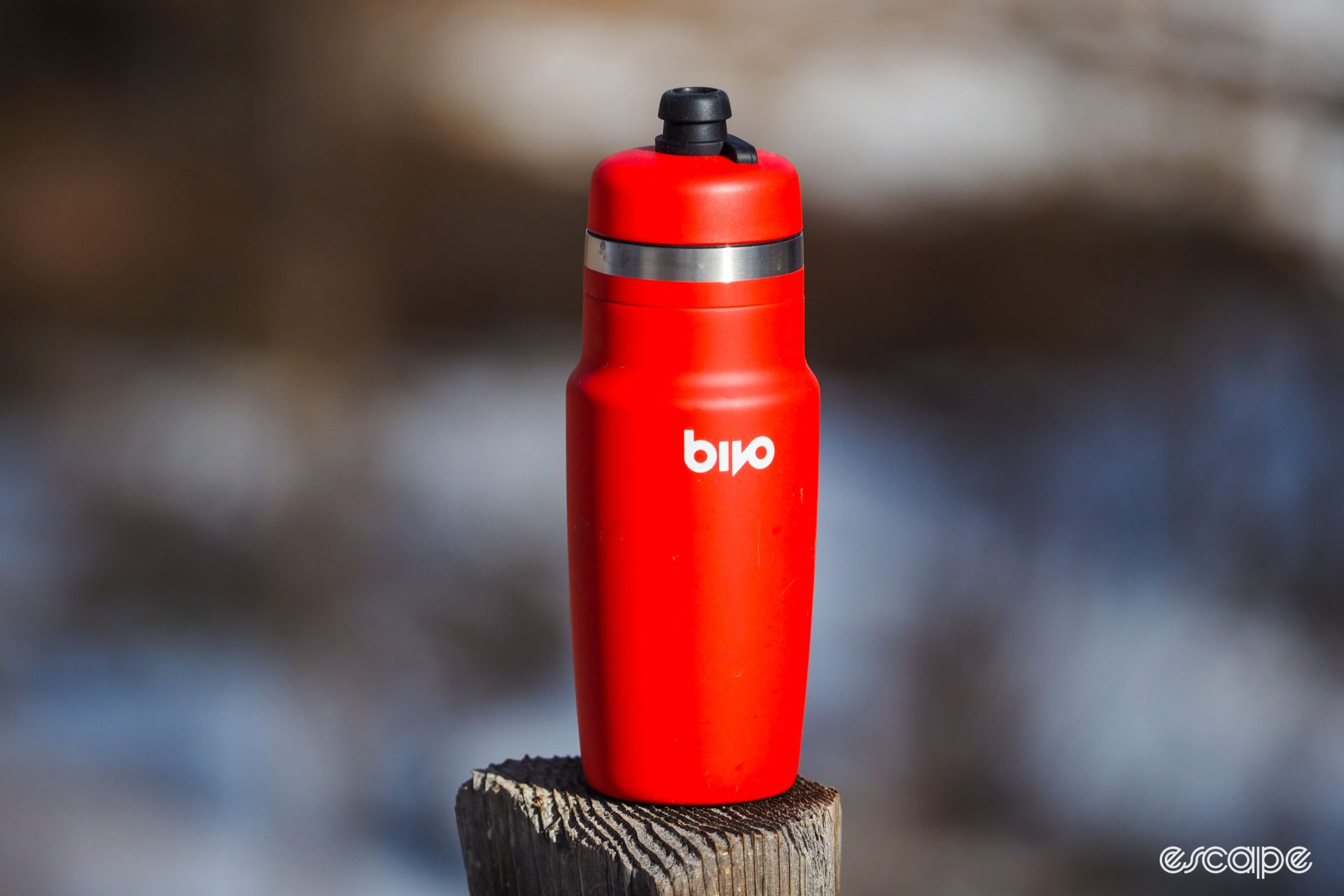
Bivo water bottles
I dislike the taste of plastic. So much so that it’s a big reason why I’ve rarely gone without some sort of drink mix in my bottles over the years. Because plasticky water is gross.
Bivo’s stainless steel bottles first caught my attention on their promise of eliminating the disgusting chemical aftertaste that comes with plastic vessels. But what I didn’t expect was how I’d be won over by their ridiculously fast flow rate. The water not only tastes better (by tasting like nothing at all), but I’m also drinking more of it. That they should last way longer than any plastic bottle and are also much easier to clean are icing on the cake. After all, the only thing I dislike more than petrochemicals in my water is mold in my bottle, and it’s a massive bonus for me that the simple top not only quickly disassembles, but washes and dries thoroughly in the dishwasher.
Perhaps not unexpectedly, Bivo bottles are several times more expensive than regular plastic bottles. They’re also a lot heavier, they’ll dent if you drop them, and if you’re not careful with your cage choice, the silicone rubber coating is prone to scuffing. But I’ve steadily been replacing most of my plastic bottles with these with no regrets whatsoever, and everyone else I’ve convinced to take the plunge on these has been really happy with them, too.
Price: US$34-49 (pricing in other regions based on exchange rate)
www.drinkbivo.com
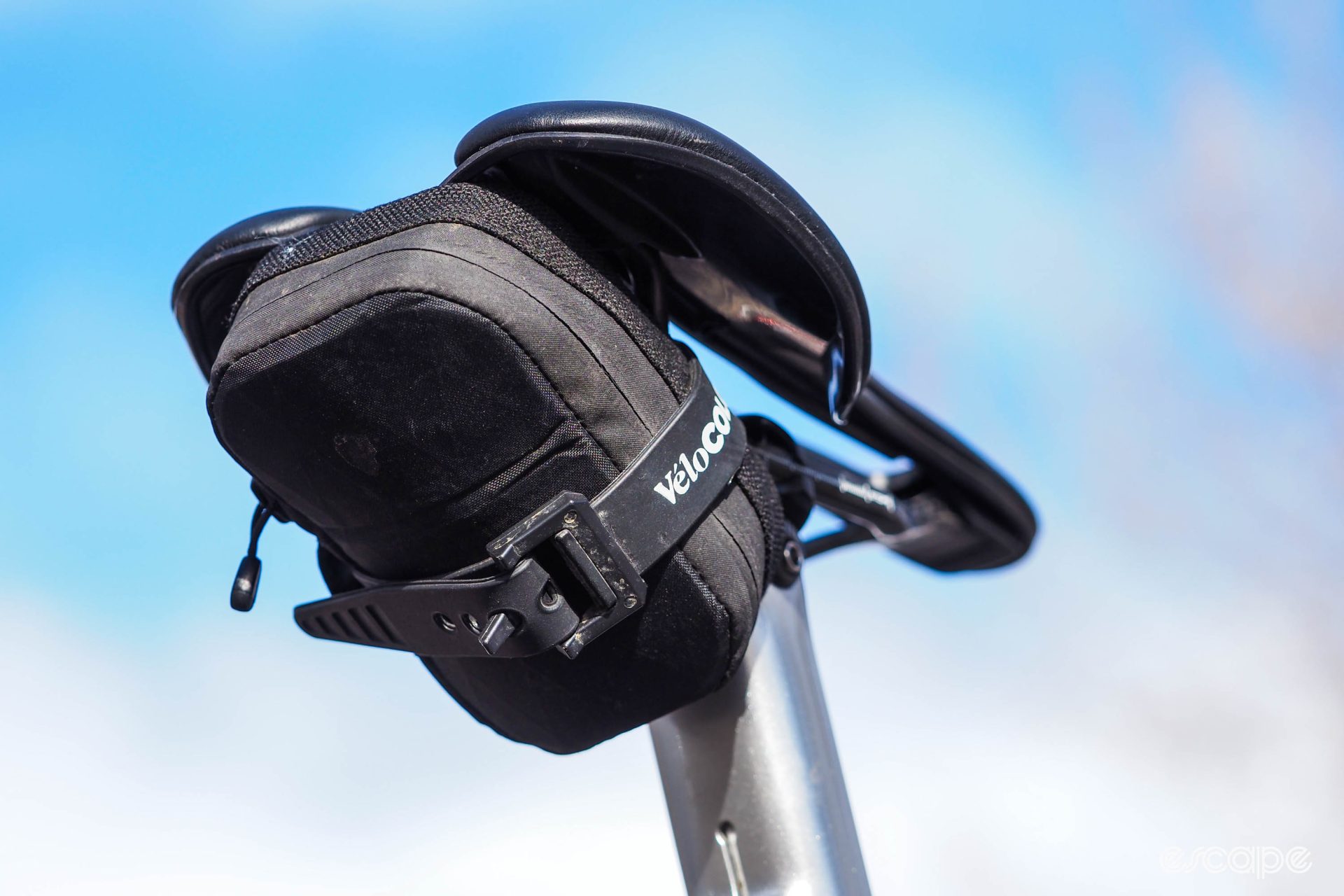
Voile straps
I probably like toe straps more than I should. They’re scattered all around my garage. I keep one in my camera bag and in my car. If I see one laying in the road, I’ll swing back around to pick it up (and if they’re a little smashed, I’ll straighten them out at home and keep using them). They’re not only useful, but virtually indestructible.
Recently, though, I’ve gradually been switching to Voile straps: those colorful rubber things you may have seen holding someone’s skis together. It turns out that, much like toe straps, they also work to hold a whole bunch of other things: saddle packs, inner tubes, various bikepacking sundries. The silicone rubber material is friendlier to painted finishes, though, and the stretchiness lets you secure stuff with some tension so your gear really doesn’t move around. The variety of available lengths makes them more versatile, too, and they even come in a bunch of different colors.
Best of all? The ones you’ll most likely use are so inexpensive that you rarely need to come up with an excuse to pick up one or two more.
Price: US$5-10.50 / AU$11-24 / £7-10 / €4-8
www.voile.com
This piece is part of our annual Favorite Things series, which Dave Rome kicked off earlier this week. Got some favorites of your own that really moved the needle for you this past year? Or maybe you have some of this gear, too, but an opinion of your own you'd like to share? Feel free to speak your mind in the comment section.
Did we do a good job with this story?

